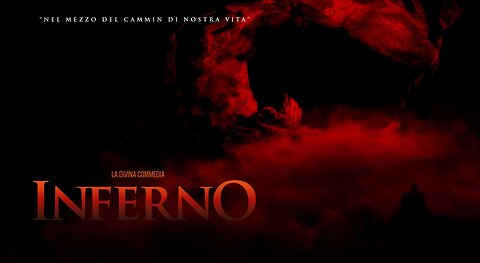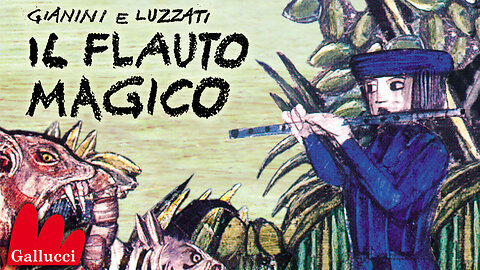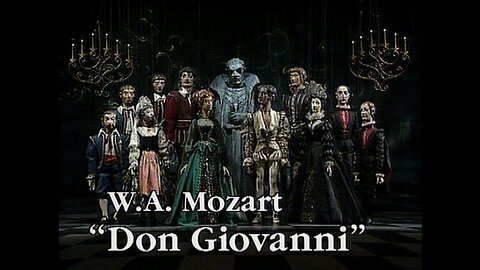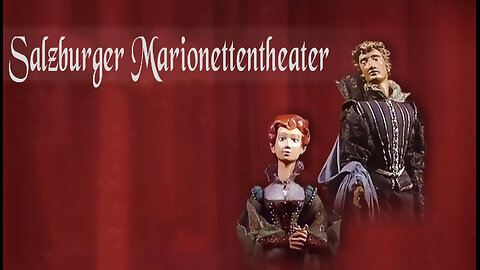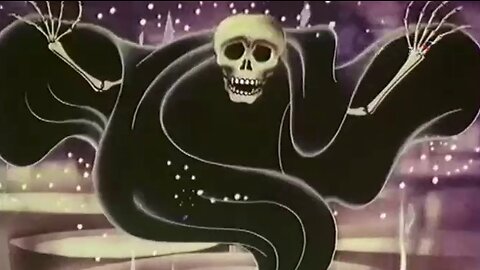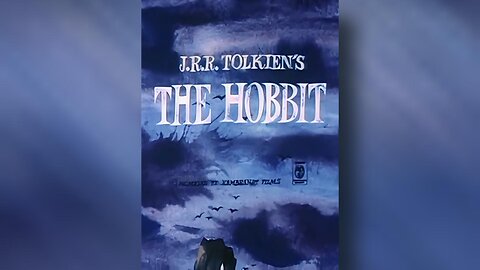
-
The Hobbit (Animation 1967)
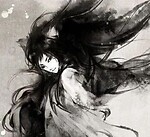 Adaneth - Cinema&TVThe Hobbit is a 1966 fantasy animated short film by Gene Deitch and the first attempt to adapt J.R.R. Tolkien's 1937 novel The Hobbit (upon which it is loosely based) into a film. Starring Herb Lass (voice-over), the film is short and lacking in detail, barely resembling the original story with the exception of the encounter with the trolls (renamed "Gromes") and Bilbo Baggins's encounter with a creature called Golüm. A Princess Mika, described as a "child", is introduced to avoid having Bilbo as a bachelor. While originally planned as an ambitious full-length adaptation, the short film actually released was an "ashcan copy", created solely to fulfil a contractual obligation and retain the rights and never intended for public exhibition. At less than twelve minutes, it is also one of the shortest films based on Tolkien's work. It has no connection to the 1977 Rankin/Bass animated film or Peter Jackson's film trilogy. Producer William L. Snyder of Rembrandt Films had the film rights to Tolkien's work from 1964 to 1967 and intended to make a feature-length animated film of The Hobbit, working with Deitch as an animator and Bill Bernal as a writer. A proposed deal with 20th Century-Fox fell through, but Snyder was nevertheless required to meet his contractual obligation to produce a "full-color film" of The Hobbit by the 30th of June that year or lose his rights to the material (which had grown significantly in value due to a recent increase in interest in the works of Tolkien). Snyder asked Deitch to make a 12-minute version, quickly and cheaply, purely to fulfil the wording of the contract. As such, this version — which was never intended for public exhibition — has been considered an "ashcan copy" by many including Deitch himself. The short is only slightly animated; it consists mostly of camera movements over still pictures, with some cut-outs moving on the screen. Rushing through production, Snyder "premiered" the film on June 30, 1967 — the last day before his film rights would expire. He paid people a dime to give back to him, and then came and watched the film in a small Manhattan projection room. He had them sign statements that they had paid to see a Hobbit film, allowing Snyder to retain the rights. He then sold the rights back to Tolkien for approximately $100,000. The film remained unknown to Tolkien fans until 2012 when Deitch posted about the film's history on his blog. He stated that the film had been produced and released in 1966, but subsequent document discoveries confirmed that this happened in 1967.117 views
Adaneth - Cinema&TVThe Hobbit is a 1966 fantasy animated short film by Gene Deitch and the first attempt to adapt J.R.R. Tolkien's 1937 novel The Hobbit (upon which it is loosely based) into a film. Starring Herb Lass (voice-over), the film is short and lacking in detail, barely resembling the original story with the exception of the encounter with the trolls (renamed "Gromes") and Bilbo Baggins's encounter with a creature called Golüm. A Princess Mika, described as a "child", is introduced to avoid having Bilbo as a bachelor. While originally planned as an ambitious full-length adaptation, the short film actually released was an "ashcan copy", created solely to fulfil a contractual obligation and retain the rights and never intended for public exhibition. At less than twelve minutes, it is also one of the shortest films based on Tolkien's work. It has no connection to the 1977 Rankin/Bass animated film or Peter Jackson's film trilogy. Producer William L. Snyder of Rembrandt Films had the film rights to Tolkien's work from 1964 to 1967 and intended to make a feature-length animated film of The Hobbit, working with Deitch as an animator and Bill Bernal as a writer. A proposed deal with 20th Century-Fox fell through, but Snyder was nevertheless required to meet his contractual obligation to produce a "full-color film" of The Hobbit by the 30th of June that year or lose his rights to the material (which had grown significantly in value due to a recent increase in interest in the works of Tolkien). Snyder asked Deitch to make a 12-minute version, quickly and cheaply, purely to fulfil the wording of the contract. As such, this version — which was never intended for public exhibition — has been considered an "ashcan copy" by many including Deitch himself. The short is only slightly animated; it consists mostly of camera movements over still pictures, with some cut-outs moving on the screen. Rushing through production, Snyder "premiered" the film on June 30, 1967 — the last day before his film rights would expire. He paid people a dime to give back to him, and then came and watched the film in a small Manhattan projection room. He had them sign statements that they had paid to see a Hobbit film, allowing Snyder to retain the rights. He then sold the rights back to Tolkien for approximately $100,000. The film remained unknown to Tolkien fans until 2012 when Deitch posted about the film's history on his blog. He stated that the film had been produced and released in 1966, but subsequent document discoveries confirmed that this happened in 1967.117 views -
La Divina Commedia - Purgatorio
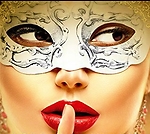 Adaneth - Arts & LiteratureIl Purgatorio si manifesta in tutta la sua imponenza: una montagna rocciosa che svetta al centro dell'emisfero australe, nell'oceano. Usciti dall'Inferno, in questo regno è ammesso lo scorrere del tempo: qui si conoscono l'alba e il tramonto, il giorno e la notte, e la luce è declinata in tutte le sue tonalità. Entrato in questo scenario primordiale lo spettatore varcherà in soggettiva, con gli occhi di Dante, la soglia del Purgatorio: una porta nella roccia, custodita da un angelo armato di spada.39 views
Adaneth - Arts & LiteratureIl Purgatorio si manifesta in tutta la sua imponenza: una montagna rocciosa che svetta al centro dell'emisfero australe, nell'oceano. Usciti dall'Inferno, in questo regno è ammesso lo scorrere del tempo: qui si conoscono l'alba e il tramonto, il giorno e la notte, e la luce è declinata in tutte le sue tonalità. Entrato in questo scenario primordiale lo spettatore varcherà in soggettiva, con gli occhi di Dante, la soglia del Purgatorio: una porta nella roccia, custodita da un angelo armato di spada.39 views -
La Divina Commedia - Inferno
 Adaneth - Arts & LiteratureLa voce di Francesco Pannofino ci accompagna in un viaggio straordinario attraverso le cantiche dantesche. Un'opera che offre allo spettatore modalità innovative e altamente immersive di fruizione del mondo immaginato all'interno di uno dei capolavori della letteratura e della poesia mondiale, simbolo dell'identità linguistico-culturale del nostro Paese. Il viaggio di un uomo, ma anche il viaggio di tutti gli uomini. Il cammino attraverso le tre cantiche inizia nella selva oscura, percorrendo alcuni dei momenti più significativi del poema dantesco. Varcando la porta degli inferi, il viaggio di Dante si configura come un moto lento e inesorabile verso il centro della terra, nel regno del male, accompagnato dai versi originali dell'opera.33 views 2 comments
Adaneth - Arts & LiteratureLa voce di Francesco Pannofino ci accompagna in un viaggio straordinario attraverso le cantiche dantesche. Un'opera che offre allo spettatore modalità innovative e altamente immersive di fruizione del mondo immaginato all'interno di uno dei capolavori della letteratura e della poesia mondiale, simbolo dell'identità linguistico-culturale del nostro Paese. Il viaggio di un uomo, ma anche il viaggio di tutti gli uomini. Il cammino attraverso le tre cantiche inizia nella selva oscura, percorrendo alcuni dei momenti più significativi del poema dantesco. Varcando la porta degli inferi, il viaggio di Dante si configura come un moto lento e inesorabile verso il centro della terra, nel regno del male, accompagnato dai versi originali dell'opera.33 views 2 comments -
Il Flauto Magico/The Magic Flute - Gianini & Luzzati (Musical Animation Film 1978)
 Adaneth - Arts & LiteratureAn animated version of the opera "Die Zauberflöte" by W.A. Mozart by the famous animation directors, artists and set designers Giannini and Luzzati with a soundtrack recorded by the Berlin Philharmonic Orchestra under the direction of Karl Böhm and the RIAS Chamber Choir conducted by Günther Arndt, made in 1964. The action is told on behalf of Papageno, performed by Marcello Barteli in Italian (no subtitles). After opening the International Comics Fair on October 29, 1978, the film was broadcast by Rai 2 on Christmas Eve of the same year. The film won the Critics' Referendum Award at the 1978 International Comics Show as best animated feature film. Interpreters: Evelyn Lear: Pamina Roberta Peters: Queen of the Night Fritz Wunderlich: Tamino Dietrich Fischer-Dieskau: Papageno Franz Crass: Sarastro Hildegard Hillebrecht: 1st Lady Cveta Ahlin: 2nd Lady Sieglinde Wagner: 3rd Lady Friedrich Lenz: Monostatos Rosl Schwaiger: 1st Boy Antonia Fahberg: 2nd Boy Raili Kostia: 3rd Boy90 views 1 comment
Adaneth - Arts & LiteratureAn animated version of the opera "Die Zauberflöte" by W.A. Mozart by the famous animation directors, artists and set designers Giannini and Luzzati with a soundtrack recorded by the Berlin Philharmonic Orchestra under the direction of Karl Böhm and the RIAS Chamber Choir conducted by Günther Arndt, made in 1964. The action is told on behalf of Papageno, performed by Marcello Barteli in Italian (no subtitles). After opening the International Comics Fair on October 29, 1978, the film was broadcast by Rai 2 on Christmas Eve of the same year. The film won the Critics' Referendum Award at the 1978 International Comics Show as best animated feature film. Interpreters: Evelyn Lear: Pamina Roberta Peters: Queen of the Night Fritz Wunderlich: Tamino Dietrich Fischer-Dieskau: Papageno Franz Crass: Sarastro Hildegard Hillebrecht: 1st Lady Cveta Ahlin: 2nd Lady Sieglinde Wagner: 3rd Lady Friedrich Lenz: Monostatos Rosl Schwaiger: 1st Boy Antonia Fahberg: 2nd Boy Raili Kostia: 3rd Boy90 views 1 comment -
Omaggio a Rossini/Homage to Rossini - Gianini & Luzzati (Musical Animation Films 1964-1973)
 Adaneth - Arts & Literature1. L'italiana in Algeri (Short Film 1969) Ouverture dal "L'italiana in Algeri" Temporale dal "Il Barbiere di Siviglia" L'italiana in Algeri (The Italian Girl in Algiers) is a 1969 animated film directed by Giulio Gianini and Emanuele Luzzati, based on the 1813 opera of the same name set to music by Gioachino Rossini, with a libretto by Angelo Anelli. Two lovers, Isabella and Lindoro, departing from Venice on a small boat, are shipwrecked in a storm on the coast of Africa near Algiers. Here Isabella is noticed by Ali, servant of the sultan Mustafà, who has her taken to his master's harem. Isabella, however, shuns Mustafà's advances and runs away from the palace with Lindoro. Ali and Mustafà chase them, but in vain. Mustafà has no choice but to seek consolation from his concubines. 2. Pulcinella (Short Film 1973) Ouverture dal "Il Turco in Italia" Pulcinella is a 1973 animated film directed by Giulio Gianini and Emanuele Luzzati. Pulcinella is harassed by his wife, who considers him a slacker, and is chased by the carabinieri for having urinated under an equestrian monument. He takes refuge on the roof of his house and falls asleep, dreaming of being a famous dancer performing in a large opera house; however, some carabinieri emerge from the audience and start chasing him. The next morning he wakes up and can return home, where he goes back to bed. The short film won the Nastro d'argento for best short film direction in 1973 and the Critics' Referendum Award at the Salone Internazionale dei Comics of the same year. It was also nominated for the 1974 edition of the Academy Award in the category of best animated short film. 3. La Gazza Ladra Sinfonia (Short Film 1964) Ouverture dal "La Gazza Ladra" La gazza ladra is a 1964 animated film directed by Giulio Gianini and Emanuele Luzzati. It takes its name from the opera of the same name by Gioachino Rossini, of which it uses the overture as a soundtrack, without however being based on the same subject as the melodrama. "After a hundred years of war, three kings powerful both at sea and on land made a pact of mutual alliance to be able to take a nice vacation so at the head of a thousand troops... they set out to make war on the birds." (from the opening credits) Three kings set out with a huge procession of knights, who slaughter the birds with bows and arrows. A magpie, however, escapes and starts creating problems for the sovereigns: first it steals the crowns from their heads, then it pierces the clouds to make it rain on them, finally it generates waves that toss the umbrellas on which the three kings have found refuge as boats. Having regained land, the kings with their courtiers barricade themselves in a palace, which the magpie and the other surviving birds begin to dismantle, making it resemble an enormous cage containing men. The short won the Grand Prix at the 1965 Melbourne International Film Festival and was nominated for the 1966 Academy Award for Best Animated Short Film. Musical Consultant Gianfranco Maselli Orchestra conducted by Maestro Arturo Basile. Il Flauto Magico/The Magic Flute - Gianini & Luzzati (Musical Animation Film 1978) https://rumble.com/v6tb3f3-il-flauto-magicothe-magic-flute-gianini-and-luzzati-animation-1978.html96 views
Adaneth - Arts & Literature1. L'italiana in Algeri (Short Film 1969) Ouverture dal "L'italiana in Algeri" Temporale dal "Il Barbiere di Siviglia" L'italiana in Algeri (The Italian Girl in Algiers) is a 1969 animated film directed by Giulio Gianini and Emanuele Luzzati, based on the 1813 opera of the same name set to music by Gioachino Rossini, with a libretto by Angelo Anelli. Two lovers, Isabella and Lindoro, departing from Venice on a small boat, are shipwrecked in a storm on the coast of Africa near Algiers. Here Isabella is noticed by Ali, servant of the sultan Mustafà, who has her taken to his master's harem. Isabella, however, shuns Mustafà's advances and runs away from the palace with Lindoro. Ali and Mustafà chase them, but in vain. Mustafà has no choice but to seek consolation from his concubines. 2. Pulcinella (Short Film 1973) Ouverture dal "Il Turco in Italia" Pulcinella is a 1973 animated film directed by Giulio Gianini and Emanuele Luzzati. Pulcinella is harassed by his wife, who considers him a slacker, and is chased by the carabinieri for having urinated under an equestrian monument. He takes refuge on the roof of his house and falls asleep, dreaming of being a famous dancer performing in a large opera house; however, some carabinieri emerge from the audience and start chasing him. The next morning he wakes up and can return home, where he goes back to bed. The short film won the Nastro d'argento for best short film direction in 1973 and the Critics' Referendum Award at the Salone Internazionale dei Comics of the same year. It was also nominated for the 1974 edition of the Academy Award in the category of best animated short film. 3. La Gazza Ladra Sinfonia (Short Film 1964) Ouverture dal "La Gazza Ladra" La gazza ladra is a 1964 animated film directed by Giulio Gianini and Emanuele Luzzati. It takes its name from the opera of the same name by Gioachino Rossini, of which it uses the overture as a soundtrack, without however being based on the same subject as the melodrama. "After a hundred years of war, three kings powerful both at sea and on land made a pact of mutual alliance to be able to take a nice vacation so at the head of a thousand troops... they set out to make war on the birds." (from the opening credits) Three kings set out with a huge procession of knights, who slaughter the birds with bows and arrows. A magpie, however, escapes and starts creating problems for the sovereigns: first it steals the crowns from their heads, then it pierces the clouds to make it rain on them, finally it generates waves that toss the umbrellas on which the three kings have found refuge as boats. Having regained land, the kings with their courtiers barricade themselves in a palace, which the magpie and the other surviving birds begin to dismantle, making it resemble an enormous cage containing men. The short won the Grand Prix at the 1965 Melbourne International Film Festival and was nominated for the 1966 Academy Award for Best Animated Short Film. Musical Consultant Gianfranco Maselli Orchestra conducted by Maestro Arturo Basile. Il Flauto Magico/The Magic Flute - Gianini & Luzzati (Musical Animation Film 1978) https://rumble.com/v6tb3f3-il-flauto-magicothe-magic-flute-gianini-and-luzzati-animation-1978.html96 views -
Mozart: Don Giovanni | Salzburger Marionettentheater Presented by Peter Ustinov (1995)
 Adaneth - Arts & LiteratureA 1995 ZDF / 3sat Production of Mozart's Opera "Don Giovanni', performed by The Salzburg Marionette Theater and presented by Sir Peter Ustinov. Voices: Don Giovanni - Cesare Siepi Donna Anna - Birgit Nilsson Donna Elvira - Leontyne Price Don Ottavio - Cesare Valletti Leporello - Fernando Corena Zerlina - Eugenia Ratti Masetto - Heinz Blankenburg Il Commendatore - Arnold van Mill Wiener Philharmoniker Conductor: Erich Leinsdorf100 views
Adaneth - Arts & LiteratureA 1995 ZDF / 3sat Production of Mozart's Opera "Don Giovanni', performed by The Salzburg Marionette Theater and presented by Sir Peter Ustinov. Voices: Don Giovanni - Cesare Siepi Donna Anna - Birgit Nilsson Donna Elvira - Leontyne Price Don Ottavio - Cesare Valletti Leporello - Fernando Corena Zerlina - Eugenia Ratti Masetto - Heinz Blankenburg Il Commendatore - Arnold van Mill Wiener Philharmoniker Conductor: Erich Leinsdorf100 views -
Salzburger Marionettentheater
 Adaneth - Arts & LiteratureA backstage visit with the "Salzburger Marionettentheater" directed by Georg Wübbolt, with narration in English. Above all, the puppets from Salzburg are associated with worldwide with Mozart, which is no coincidence as the history of the "Salzburger Marionettentheater" started with Mozart. Founded by Anton Aicher at the beginning of the 20th century, today the theatre is run in the third generation by his granddaughter Prof. Gretl Aicher. When her grandfather brought his puppet theatre to the public eye for the first time, he chose instinctively a pastoral play by young Mozart who was only 12 years old when he composed "Bastien and Bastienne". His genius inspired the puppets and their players, the friends, singers and musicians who put themselves at the disposal of the small theatre. The audience was enthusiastic about this unusual presentation of Mozart though at that time nobody could know which course the Salzburg puppets would take in the time to come. Later Prof. Gretl Aichers parents tried hard to improve he technique, the expression and the possibilities of the puppets. Hermann Aicher spared neither risk nor experiments although he had to fend for himself and could not expect any support from official sources which nowadays, in the age of subsidized theatre, is and almost unimaginable fact. Not least because of economical reasons, the Aichers had to switch over to a tour theatre which required an attractive, internationally comprehensible repertoire. With the help of new recording techniques the ensemble started to carry out a long-cherished wish: a performance of Mozart's "Magic Flute". In 1952 the puppet theatre started to work out its first "Magic Flute" in collaboration with the set-designer Günther Schneider-Siemssen and the Mozart expert, writer and director Géza Rech. Base on a recording of a performance at the Salzburg Festival the experiment was more than a success. Mozart's music, the magic of the reduced stage, the phenomenon of the anonymous ideal figures that left much room for the viewer's fantasy acted in combination and had an effect in New York as well as in Dallas, in Paris as well as in Tokyo or South Africa. Until today, "The Magic Flute" is the heart of the Mozart repertoire.84 views
Adaneth - Arts & LiteratureA backstage visit with the "Salzburger Marionettentheater" directed by Georg Wübbolt, with narration in English. Above all, the puppets from Salzburg are associated with worldwide with Mozart, which is no coincidence as the history of the "Salzburger Marionettentheater" started with Mozart. Founded by Anton Aicher at the beginning of the 20th century, today the theatre is run in the third generation by his granddaughter Prof. Gretl Aicher. When her grandfather brought his puppet theatre to the public eye for the first time, he chose instinctively a pastoral play by young Mozart who was only 12 years old when he composed "Bastien and Bastienne". His genius inspired the puppets and their players, the friends, singers and musicians who put themselves at the disposal of the small theatre. The audience was enthusiastic about this unusual presentation of Mozart though at that time nobody could know which course the Salzburg puppets would take in the time to come. Later Prof. Gretl Aichers parents tried hard to improve he technique, the expression and the possibilities of the puppets. Hermann Aicher spared neither risk nor experiments although he had to fend for himself and could not expect any support from official sources which nowadays, in the age of subsidized theatre, is and almost unimaginable fact. Not least because of economical reasons, the Aichers had to switch over to a tour theatre which required an attractive, internationally comprehensible repertoire. With the help of new recording techniques the ensemble started to carry out a long-cherished wish: a performance of Mozart's "Magic Flute". In 1952 the puppet theatre started to work out its first "Magic Flute" in collaboration with the set-designer Günther Schneider-Siemssen and the Mozart expert, writer and director Géza Rech. Base on a recording of a performance at the Salzburg Festival the experiment was more than a success. Mozart's music, the magic of the reduced stage, the phenomenon of the anonymous ideal figures that left much room for the viewer's fantasy acted in combination and had an effect in New York as well as in Dallas, in Paris as well as in Tokyo or South Africa. Until today, "The Magic Flute" is the heart of the Mozart repertoire.84 views -
Mussorgsky - Night on Bald Mountain (Animation Film - 1998)
 Adaneth - Arts & LiteratureA 1998 Short Animation Film directed by Galina Shakitskaya. Night on Bald Mountain, also known as Night on the Bare Mountain, is a series of compositions by Modest Mussorgsky (1839–1881). Inspired by Russian literary works and legend, Mussorgsky composed a "musical picture", St. John's Eve on Bald Mountain on the theme of a Witches' Sabbath occurring at Bald Mountain on St. John's Eve, which he completed on that very night, 23 June 1867. Together with Nikolai Rimsky-Korsakov's Sadko (1867), it is one of the first tone poems by a Russian composer. Mussorgsky was part of a group of Russian composers known as "The Five" that was an innovator of Russian music and promoted a uniquely Russian aesthetic identity. Night on Bald Mountain does that by using a Russian folk story as the inspiration. Mussorgsky was the only member of the group, which included Rimsky-Korsakov and Borodin, who never left his native country. Born into wealth and lineage-his landowning family was reputedly descended from the first Russian Ruler, Rurik-Mussorgsky was sent to officers' school and was groomed to serve in the military, like many of the men in his family. Mussorgsky is one of the most daring and creative Russian composers of his time and his works are novel yet stylistically romantic. Many of his compositions are inspired by Russian history and Russian folklore; folk melodies and harmonies can frequently be heard in his works. Mussorgsky's first ideas for the tone poem A Night on Bald Mountain were inspired by the ancient Russian legend of nocturnal revels that take place on St. John's Night in June on a hill called Lysa Hora near Kiev. The legend tells of a demon, Chernobog, who leads the revels until, in the composer's words, "the sounds of the far-off bell of the little church in a village...disperses the Spirits of Darkness." In 1860, Mussorgsky entertained thoughts of using this idea to write a one-act opera based on Nikolai Gogol's story the The Eve of Ivan Kupala. Ivan Kupala is a combination of St. John and a Slavic god, Kupalo whose feast day is the Summer Solstice. This idea didn't materialize and was transformed instead into a plan for a one-act opera based on Baron Mengden's play the Witches. Both projects were abandoned. In 1867, Mussorgsky had turned the music into what he called a "tone-picture" for orchestra. This piece was entitled St. John's Night on the Bare Mountain. The score was modified several times before finding its present orchestration; Mussorgky's friend Nikolai Rimsky-Korsakov undertook the revisions and re-orchestration of the so called "fourth version" performed it on October 27, 1886 in St. Petersburg as A Night on Bald Mountain. Rimsky-Korsakov altered the ending of the work in his revision of the score. In Mussorgsky's original version, the ending is brutal and savage; Rimsky-Korsakov has the end fade away peacefully. Known as the "Rimsky-Korsakov version" it is a highly polished and effective score that has kept Mussorgsky's name before a wide public and has become one of the most popular works in orchestral literature. The most recognized version of Mussorgsky's tone poem today comes from Walt Disney's 1940 animated film Fantasia as arranged by Leopold Stokowski. Stokowski based his arrangement on Rimsky-Korsakov's in form and content, but on Mussorgsky's original in orchestration. Although the most famous version of A Night on Bald Mountain, the Stokowski arrangement is rarely heard outside of the movie.166 views
Adaneth - Arts & LiteratureA 1998 Short Animation Film directed by Galina Shakitskaya. Night on Bald Mountain, also known as Night on the Bare Mountain, is a series of compositions by Modest Mussorgsky (1839–1881). Inspired by Russian literary works and legend, Mussorgsky composed a "musical picture", St. John's Eve on Bald Mountain on the theme of a Witches' Sabbath occurring at Bald Mountain on St. John's Eve, which he completed on that very night, 23 June 1867. Together with Nikolai Rimsky-Korsakov's Sadko (1867), it is one of the first tone poems by a Russian composer. Mussorgsky was part of a group of Russian composers known as "The Five" that was an innovator of Russian music and promoted a uniquely Russian aesthetic identity. Night on Bald Mountain does that by using a Russian folk story as the inspiration. Mussorgsky was the only member of the group, which included Rimsky-Korsakov and Borodin, who never left his native country. Born into wealth and lineage-his landowning family was reputedly descended from the first Russian Ruler, Rurik-Mussorgsky was sent to officers' school and was groomed to serve in the military, like many of the men in his family. Mussorgsky is one of the most daring and creative Russian composers of his time and his works are novel yet stylistically romantic. Many of his compositions are inspired by Russian history and Russian folklore; folk melodies and harmonies can frequently be heard in his works. Mussorgsky's first ideas for the tone poem A Night on Bald Mountain were inspired by the ancient Russian legend of nocturnal revels that take place on St. John's Night in June on a hill called Lysa Hora near Kiev. The legend tells of a demon, Chernobog, who leads the revels until, in the composer's words, "the sounds of the far-off bell of the little church in a village...disperses the Spirits of Darkness." In 1860, Mussorgsky entertained thoughts of using this idea to write a one-act opera based on Nikolai Gogol's story the The Eve of Ivan Kupala. Ivan Kupala is a combination of St. John and a Slavic god, Kupalo whose feast day is the Summer Solstice. This idea didn't materialize and was transformed instead into a plan for a one-act opera based on Baron Mengden's play the Witches. Both projects were abandoned. In 1867, Mussorgsky had turned the music into what he called a "tone-picture" for orchestra. This piece was entitled St. John's Night on the Bare Mountain. The score was modified several times before finding its present orchestration; Mussorgky's friend Nikolai Rimsky-Korsakov undertook the revisions and re-orchestration of the so called "fourth version" performed it on October 27, 1886 in St. Petersburg as A Night on Bald Mountain. Rimsky-Korsakov altered the ending of the work in his revision of the score. In Mussorgsky's original version, the ending is brutal and savage; Rimsky-Korsakov has the end fade away peacefully. Known as the "Rimsky-Korsakov version" it is a highly polished and effective score that has kept Mussorgsky's name before a wide public and has become one of the most popular works in orchestral literature. The most recognized version of Mussorgsky's tone poem today comes from Walt Disney's 1940 animated film Fantasia as arranged by Leopold Stokowski. Stokowski based his arrangement on Rimsky-Korsakov's in form and content, but on Mussorgsky's original in orchestration. Although the most famous version of A Night on Bald Mountain, the Stokowski arrangement is rarely heard outside of the movie.166 views -
Dante's Inferno: An Animated Epic (2010 Animation Film)
 Adaneth - Cinema&TVDante's Inferno: An Animated Epic is a 2010 animated film-addition to the video game of the same name. An interpretation of the "Divine Comedy" by Dante Alighieri, in which the main character Dante goes through 9 circles of hell in order to save his beloved. Six well-known animation directors are involved in the creation of the film, including the famous Yasuomi Umetsu, the author of "Kite" and "Mezzo Forte", and Shukou Murase, the director of "Ergo Proxy" and "Witch Hunter Robin". Several studios worked on the production of the anime, including "Production IG". Cast: Graham McTavish (Dante, voice) , Vanessa Branch (Beatrice, voice) , Steven Bloom (Lucifer, voice) , Peter Jessop (Virgil, voice) , Mark Hamill (Alighiero, voice) , Victoria Tennant (Bella, voice) , Bart McCarthy (Filippo Argenti, voice) , Kevin Michael Richardson (Phlegyas / King Minos, voice) , John Paul Karliak (The Avenger, voice) , Tom Tate (Francesco, voice) , J. Grant Albrecht (Ciacco / Farinata Uberti, voice acting), Nika Futterman (Female Prisoner, voice). Director: Victor Cook, Michael D'Isa-Hogan, Sang-Jin Kim Screenplay: Dante Alighieri, Jonathan Knight, Brandon Auman Producer: Joe Goyette, Mitsuhisa Ishikawa, Kate Latchford, Carin Davis, Jim Wyatt. Composer: Christopher Tin389 views 2 comments
Adaneth - Cinema&TVDante's Inferno: An Animated Epic is a 2010 animated film-addition to the video game of the same name. An interpretation of the "Divine Comedy" by Dante Alighieri, in which the main character Dante goes through 9 circles of hell in order to save his beloved. Six well-known animation directors are involved in the creation of the film, including the famous Yasuomi Umetsu, the author of "Kite" and "Mezzo Forte", and Shukou Murase, the director of "Ergo Proxy" and "Witch Hunter Robin". Several studios worked on the production of the anime, including "Production IG". Cast: Graham McTavish (Dante, voice) , Vanessa Branch (Beatrice, voice) , Steven Bloom (Lucifer, voice) , Peter Jessop (Virgil, voice) , Mark Hamill (Alighiero, voice) , Victoria Tennant (Bella, voice) , Bart McCarthy (Filippo Argenti, voice) , Kevin Michael Richardson (Phlegyas / King Minos, voice) , John Paul Karliak (The Avenger, voice) , Tom Tate (Francesco, voice) , J. Grant Albrecht (Ciacco / Farinata Uberti, voice acting), Nika Futterman (Female Prisoner, voice). Director: Victor Cook, Michael D'Isa-Hogan, Sang-Jin Kim Screenplay: Dante Alighieri, Jonathan Knight, Brandon Auman Producer: Joe Goyette, Mitsuhisa Ishikawa, Kate Latchford, Carin Davis, Jim Wyatt. Composer: Christopher Tin389 views 2 comments

